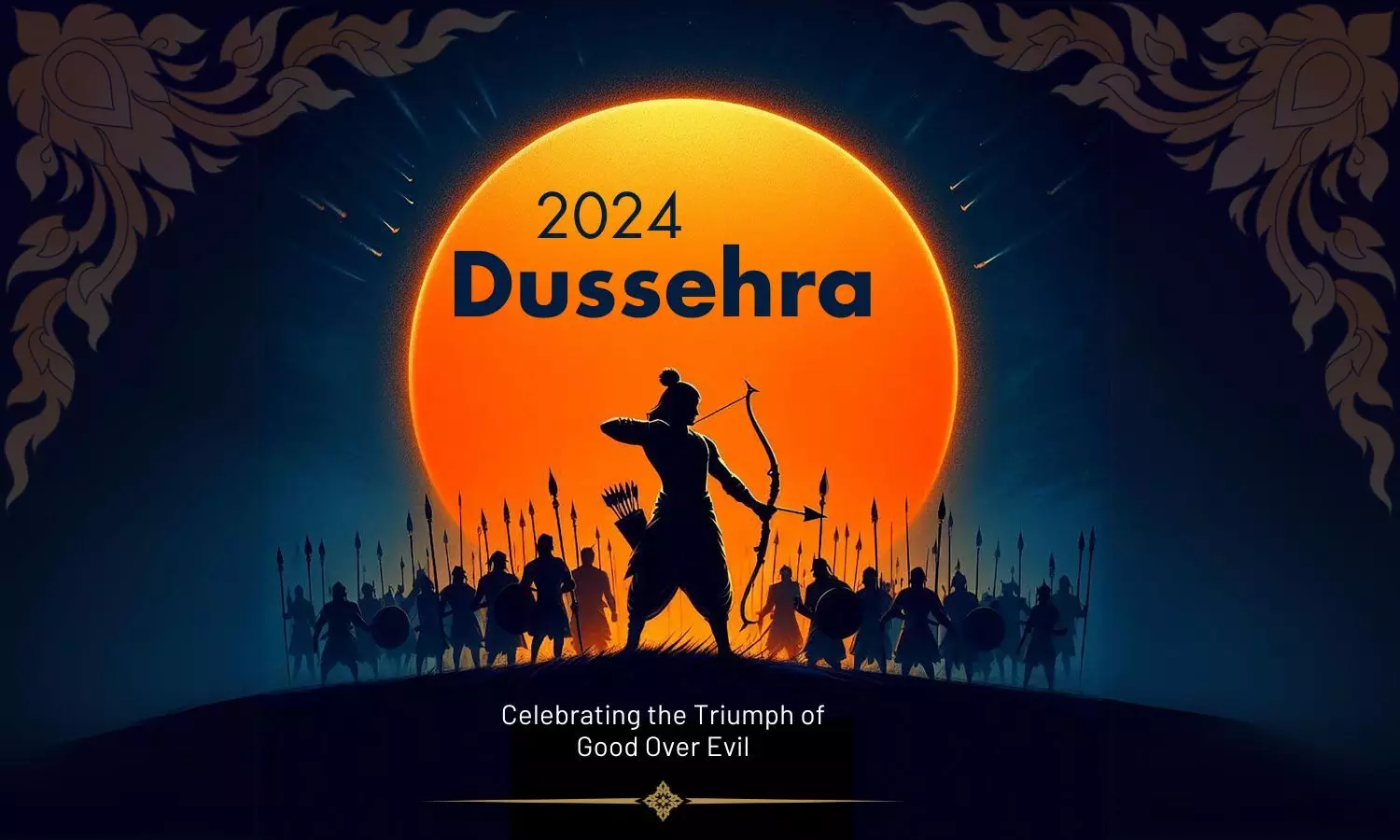Dussehra 2024: A Celebration of Triumph, Tradition, and Indian Heritage

Learn about the significance of Dussehra 2024. Know about its history, traditions, and cultural importance in this informative guide.
Dussehra is one of the most important Hindu festivals in India. It is celebrated with great enthusiasm and devotion. The festival marks the triumph of good over evil and signifies the victory of righteousness. It is celebrated on the tenth day of the Ashvin month, according to the Hindu lunar calendar, and follows the nine-day Navratri festival. Dussehra 2024 will be observed on October 12th, with various regions across India showcasing their unique ways of celebrating the occasion.
The Significance of Dussehra
Dussehra holds a special place in Indian culture and mythology. It commemorates the victory of Lord Rama over the demon king Ravana, symbolising the eternal battle between good and evil. The festival also represents the end of Mahishasura, a demon defeated by Goddess Durga. This dual significance makes Dussehra a powerful reminder of the moral and spiritual duty to uphold truth and justice.
In 2024, as people prepare to celebrate Dussehra, the core message remains relevant - the ultimate triumph of good over evil is a concept deeply rooted in Indian mythology. This festival brings families and communities together, fostering unity and reinforcing faith in righteousness.
The Legend Behind Dussehra
The story of Dussehra history is intertwined with the epic of the Ramayana, one of the most revered texts in Hinduism. According to the Ramayana, Lord Rama, the seventh avatar of Vishnu, embarked on a journey to rescue his wife, Sita, who had been kidnapped by Ravana, the ten-headed king of Lanka. After a fierce battle that lasted several days, Rama ultimately defeated Ravana on the tenth day, marking the celebration of Dussehra.
This narrative is not only an essential part of the festival celebration but also carries a moral lesson about the consequences of greed, arrogance, and deceit. Ravana, though a powerful and learned king, succumbed to his desires and paid the price. Rama, representing goodness and humility, emerged victorious, showcasing that true strength lies in virtue, not in might.
How Dussehra is Celebrated
Different parts of India celebrate Dussehra in their own unique styles, yet the underlying theme remains the same, that is the victory of good over evil. Here are some of the most prominent ways Dussehra is celebrated across the country -
1. North India- In many northern states, the festival is marked by Ram Leela, a dramatic reenactment of the events leading up to the defeat of Ravana. Large effigies of Ravana, along with those of his brothers Meghnath and Kumbhkaran, are burned in public spaces to symbolise the destruction of evil. These grand spectacles are accompanied by fireworks, cultural performances, and community gatherings.
2. West Bengal- In the eastern part of India, particularly in West Bengal, Dussehra coincides with Durga Puja, where Goddess Durga’s victory over the buffalo demon Mahishasura is celebrated. On the last day of Durga Puja, the idols of the goddess are immersed in rivers and seas, symbolising her return to the divine world after vanquishing evil.
3. South India- In states like Karnataka and Tamil Nadu, Dussehra is observed with grand processions, especially in Mysore, where the Mysore Palace is illuminated, and the royal family leads a ceremonial parade. People also set up elaborate Golu displays, showcasing figurines of gods, goddesses, and other mythological characters.
4. Western India- In Maharashtra and Gujarat, Dussehra marks the end of the nine-day Navratri celebration, where people dance the Garba and Dandiya in colourful costumes. The festival is also a time to seek blessings from elders and begin new ventures, as it is considered an auspicious day.
The Importance of Unity in Dussehra
Dussehra also highlights the importance of unity and community. During the festival, people from all walks of life come together to celebrate, leaving aside differences in caste, creed, and status. This sense of togetherness is a core aspect of the Indian mythology surrounding the festival, where the gods, humans, and even animals joined forces to defeat evil.
In today’s world, where division and conflict often dominate, Dussehra serves as a reminder of the power of unity and collective action. Whether it is through the Ram Leela performances, the Durga Puja processions, or the burning of effigies, Dussehra brings people together in a shared sense of purpose and joy.
Dussehra 2024 promises to be a vibrant and meaningful celebration of the victory of good over evil. As people across India and the world prepare for this festival, the message of Dussehra remains clear- goodness, truth, and justice will always triumph in the end. The significance of Dussehra lies not only in its rich traditions and rituals but also in the universal values it promotes, values that continue to inspire and guide people in their daily lives.
Whether through the legends of Ramayana or the story of Durga’s victory, Dussehra encourages everyone to strive for a world where truth, kindness, and righteousness prevail. In celebrating this festival, people are reminded that, like Lord Rama, they too have the power to defeat the challenges in their lives and emerge victorious.

